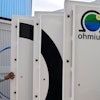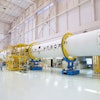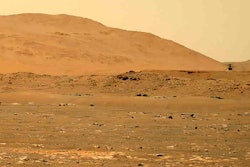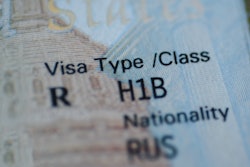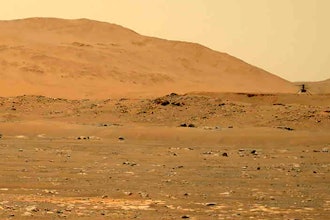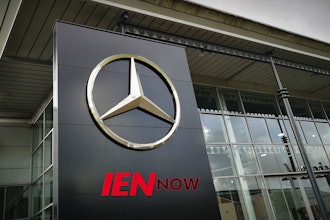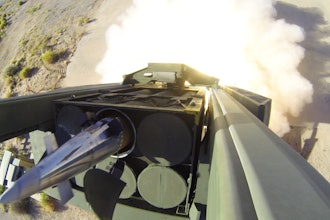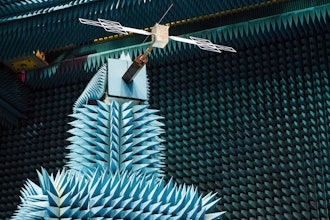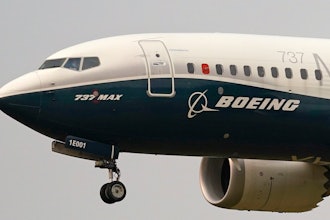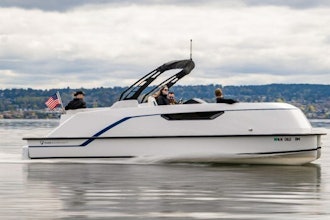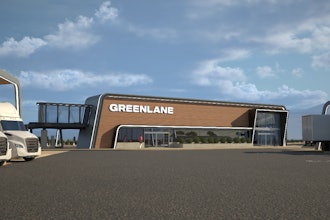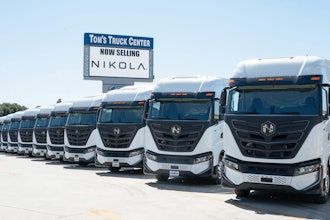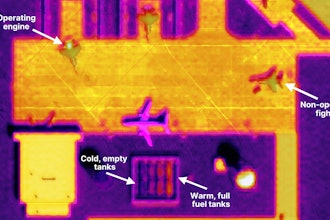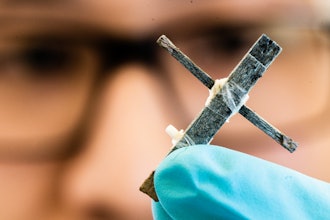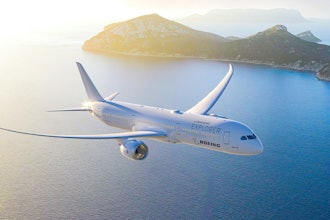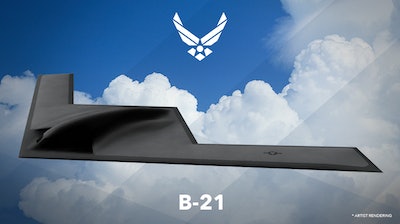
WASHINGTON (AP) — America's newest nuclear stealth bomber is making its public debut after years of secret development and as part of the Pentagon's answer to rising concerns over a future conflict with China.
READ MORE: 10 Facts About the New B-21 Raider
The B-21 Raider is the first new American bomber aircraft in more than 30 years. Almost every aspect of the program is classified. Ahead of its unveiling Friday at an Air Force facility in Palmdale, California, only artists' renderings of the warplane have been released. Those few images reveal that the Raider resembles the black nuclear stealth bomber it will eventually replace, the B-2 Spirit.
The bomber is part of the Pentagon's efforts to modernize all three legs of its nuclear triad, which includes silo-launched nuclear ballistic missiles and submarine-launched warheads, as it shifts from the counterterrorism campaigns of recent decades to meet China's rapid military modernization.
China is on track to have 1,500 nuclear weapons by 2035, and its gains in hypersonics, cyber warfare, space capabilities and other areas present "the most consequential and systemic challenge to U.S. national security and the free and open international system," the Pentagon said this week in its annual China report.
"We needed a new bomber for the 21st Century that would allow us to take on much more complicated threats, like the threats that we fear we would one day face from China, Russia, " said Deborah Lee James, the Air Force secretary when the Raider contract was announced in 2015. "The B-21 is more survivable and can take on these much more difficult threats."
While the Raider may resemble the B-2, once you get inside, the similarities stop, said Kathy Warden, chief executive of Northrop Grumman Corp., which is building the Raider.
"The way it operates internally is extremely advanced compared to the B-2, because the technology has evolved so much in terms of the computing capability that we can now embed in the software of the B-21," Warden said.
Other changes likely include advanced materials used in coatings to make the bomber harder to detect, new ways to control electronic emissions, so the bomber could spoof adversary radars and disguise itself as another object, and use of new propulsion technologies, several defense analysts said.
In a fact sheet, Northrop Grumman, based in Falls Church, Virginia, said it is using "new manufacturing techniques and materials to ensure the B-21 will defeat the anti-access, area-denial systems it will face."
Warden could not discuss specifics of those technologies but said the bomber will be more stealthy.
"When we talk about low observability, it is incredibly low observability," Warden said. "You'll hear it, but you really won't see it."
Six B-21 Raiders are in production; The Air Force plans to build 100 that can deploy either nuclear weapons or conventional bombs and can be used with or without a human crew. Both the Air Force and Northrop also point to the Raider's relatively quick development: The bomber went from contract award to debut in seven years. Other new fighter and ship programs have taken decades.
The cost of the bombers is unknown. The Air Force previously put the price for a buy of 100 aircraft at an average cost of $550 million each in 2010 dollars -- roughly $753 million today — but it's unclear how much the Air Force is actually spending.
The fact that the price is not public troubles government watchdogs.
"It might be a big challenge for us to do our normal analysis of a major program like this," said Dan Grazier, a senior defense policy fellow at the Project on Government Oversight. "It's easy to say that the B-21 is still on schedule before it actually flies. Because it's only when one of these programs goes into the actual testing phase when real problems are discovered. And so that's the point when schedules really start to slip and costs really start to rise."
The Raider will not make its first flight until 2023. However, using advanced computing, Warden said, Northrop Grumman has been testing the Raider's performance using a digital twin, a virtual replica of the one being unveiled.
The B-2 was also envisioned to be a fleet of more than 100 aircraft, but the Air Force ultimately built only 21 of them, due to cost overruns and a changed security environment after the Soviet Union fell.
Fewer than that are ready to fly on any given day due to the significant maintenance needs of the aging bomber, said Todd Harrison, an aerospace specialist and managing director at Metrea Strategic Insights.
The B-21 Raider, which takes its name from the 1942 Doolittle Raid over Tokyo, will be slightly smaller than the B-2 to increase its range, Warden said.
In October 2001, B-2 pilots set a record when they flew 44 hours straight to drop the first bombs in Afghanistan after the Sept. 11 attacks. But the B-2 often does long round-trip missions, because there are few hangars globally that can accommodate its wingspan. That limits where B-2s can land for needed post-flight maintenance. And the hangars needed to be air-conditioned — because the Spirit's windows don't open, hotter climates can cook cockpit electronics.
The new Raider will also get new hangars, to accommodate the size and complexity of the bomber, Warden said.
A last noticeable difference is in the debut itself. While both will have debuted in the Air Force's Palmdale Plant 42, in 1988 the B-2 was rolled outdoors amid much public fanfare.
Given advances in surveillance satellites and cameras, the Raider will debut very much under wraps and will be viewed inside a hangar. Invited guests including Defense Secretary Lloyd Austin will witness the hangar doors open to reveal the bomber for its public introduction, then the doors will close again.
"The magic of the platform," Warden said, "is what you don't see."

